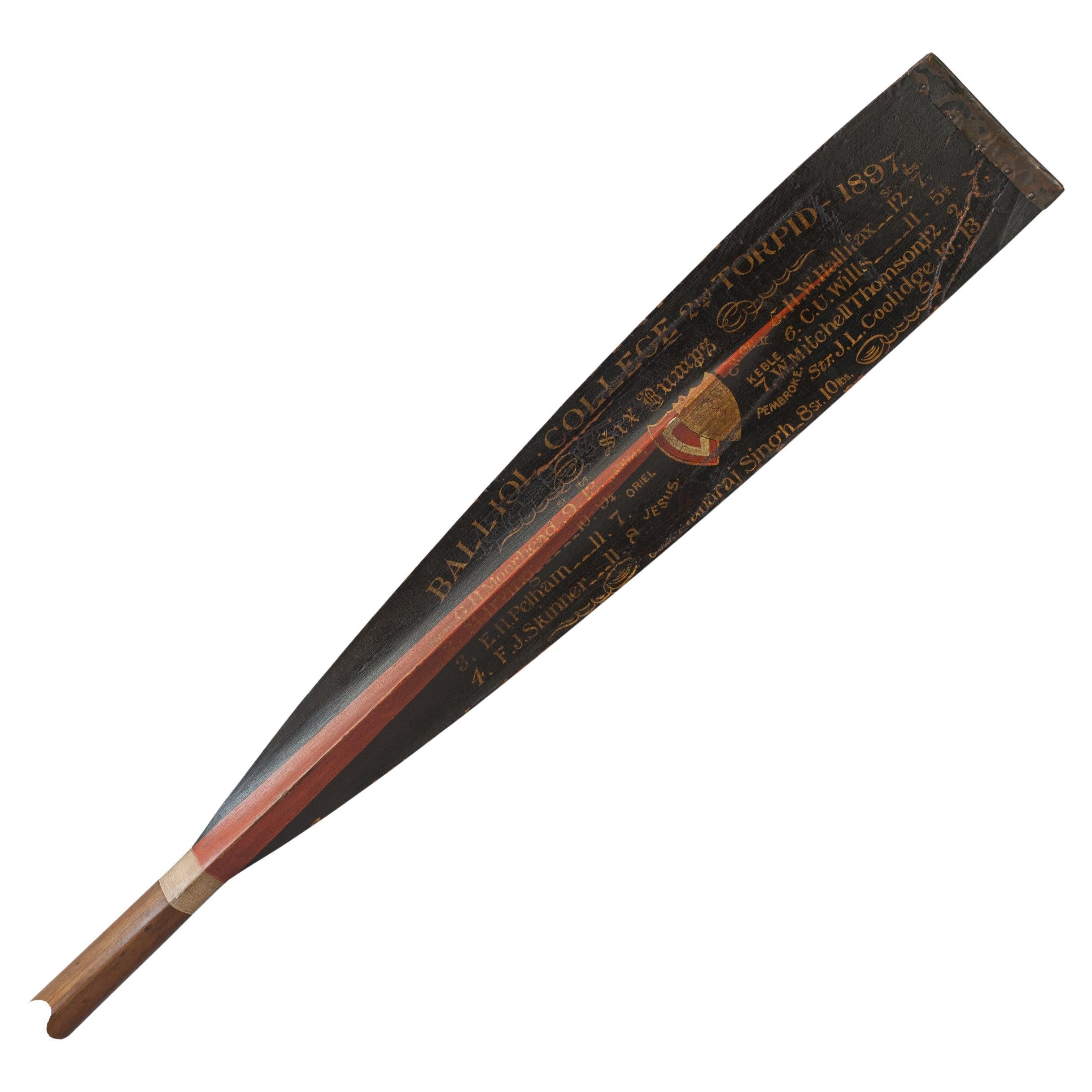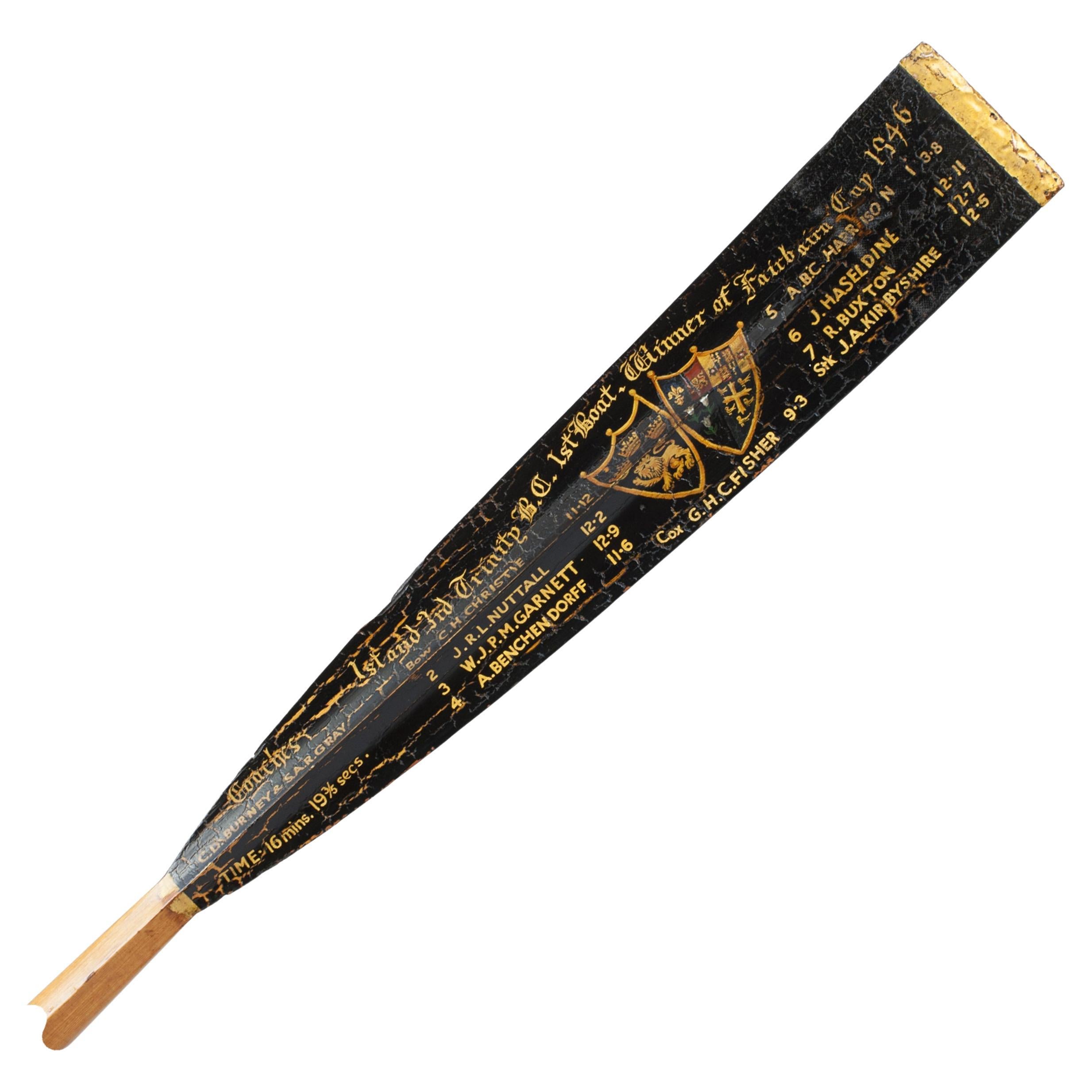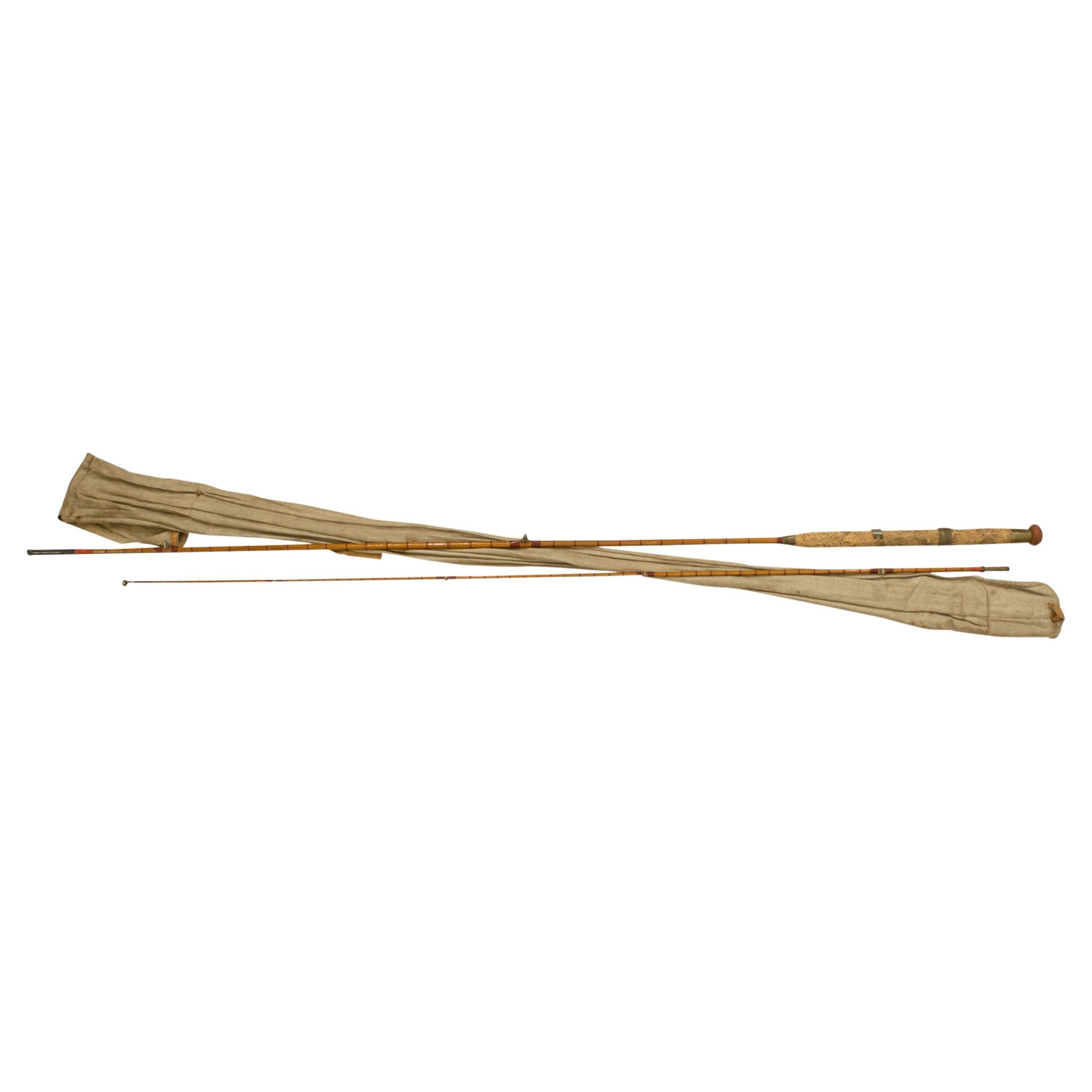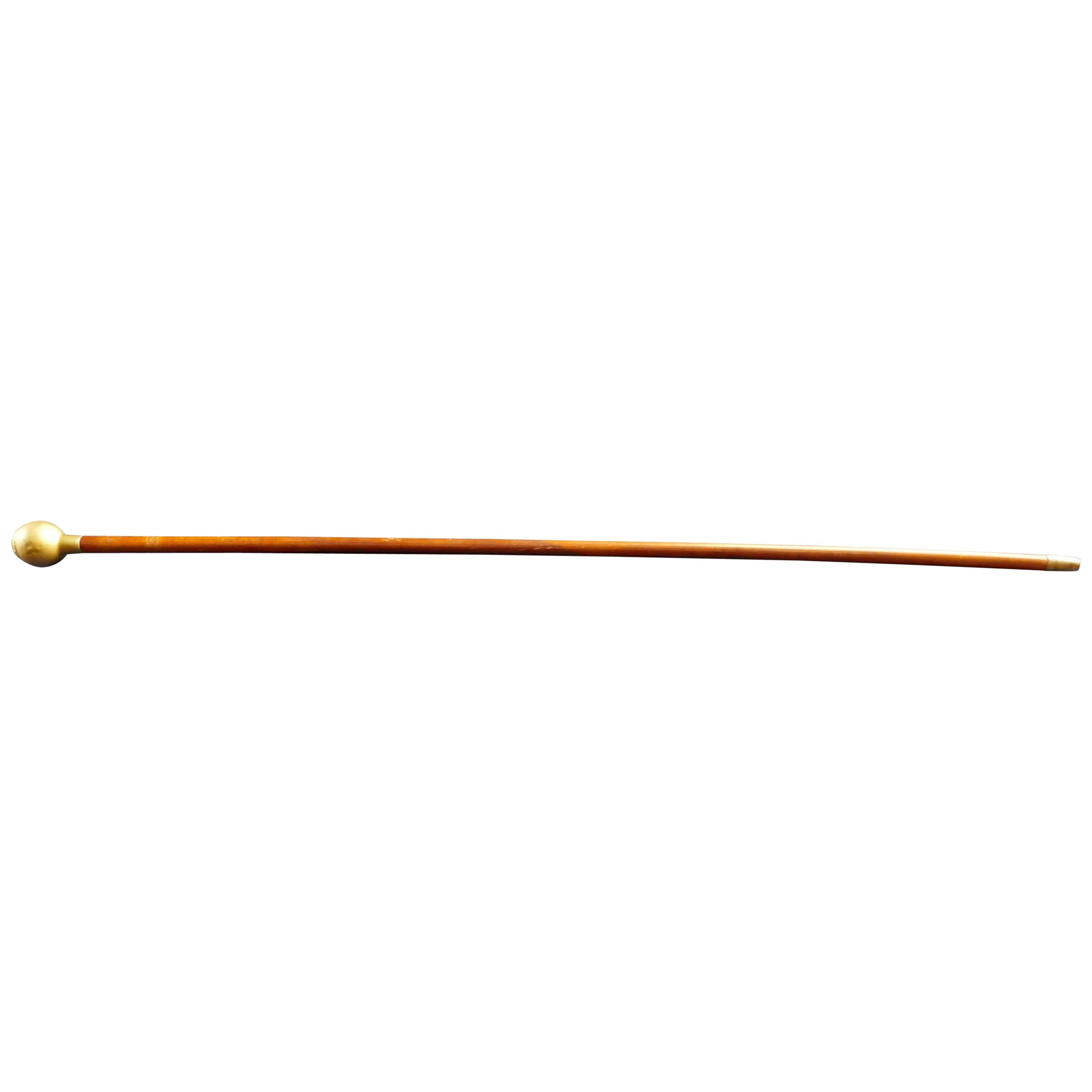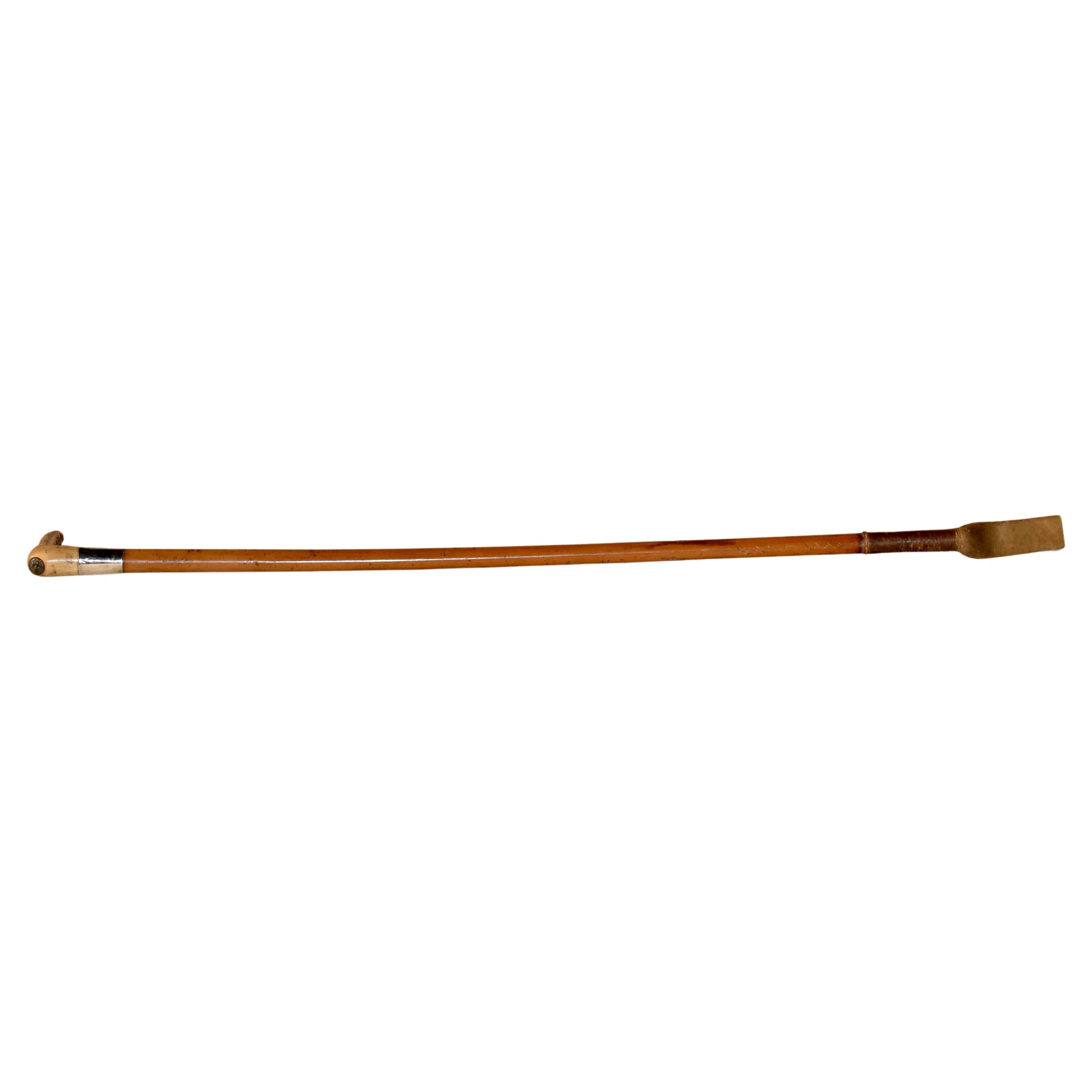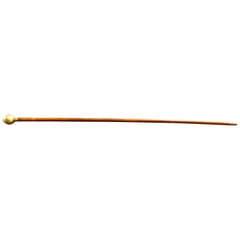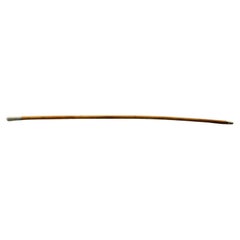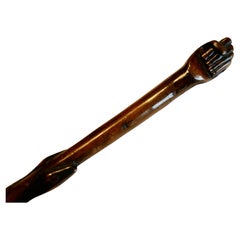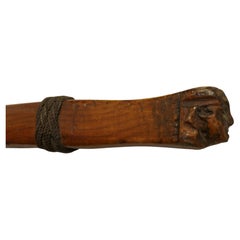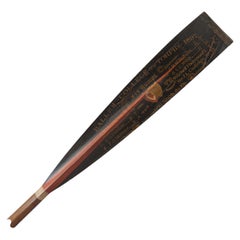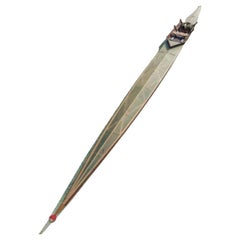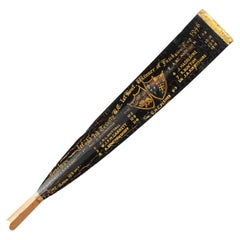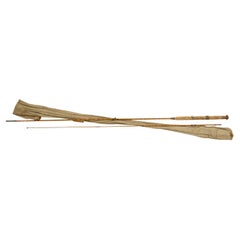Items Similar to Very Long Racing Scull or Oar from Eton College Windsor
Want more images or videos?
Request additional images or videos from the seller
1 of 6
Very Long Racing Scull or Oar from Eton College Windsor
$972.81
£725
€839.10
CA$1,367.14
A$1,486.57
CHF 783.28
MX$18,057.54
NOK 9,847.39
SEK 9,231.14
DKK 6,296.72
About the Item
Very Long Racing Scull or Oar from Eton College Windsor
This is a fine quality extra long oar from Eton College, the spoon or blade has blue chevrons painted on it and the long ash shaft is in its original varnished finish with original Eaton Coats of Arms,
The Oar is in good used condition with the expected scuffing of the finish
It is 151” long and the blade is 8” wide and 24” long
AC54.
- Dimensions:Height: 151 in (383.54 cm)Width: 4 in (10.16 cm)Depth: 8 in (20.32 cm)
- Style:Folk Art (In the Style Of)
- Materials and Techniques:
- Period:
- Date of Manufacture:1920
- Condition:
- Seller Location:Godshill, GB
- Reference Number:Seller: AC541stDibs: LU2498327329532
About the Seller
4.9
Gold Seller
Premium sellers maintaining a 4.3+ rating and 24-hour response times
Established in 1980
1stDibs seller since 2017
907 sales on 1stDibs
Typical response time: 5 hours
- ShippingRetrieving quote...Shipping from: Godshill, United Kingdom
- Return Policy
Authenticity Guarantee
In the unlikely event there’s an issue with an item’s authenticity, contact us within 1 year for a full refund. DetailsMoney-Back Guarantee
If your item is not as described, is damaged in transit, or does not arrive, contact us within 7 days for a full refund. Details24-Hour Cancellation
You have a 24-hour grace period in which to reconsider your purchase, with no questions asked.Vetted Professional Sellers
Our world-class sellers must adhere to strict standards for service and quality, maintaining the integrity of our listings.Price-Match Guarantee
If you find that a seller listed the same item for a lower price elsewhere, we’ll match it.Trusted Global Delivery
Our best-in-class carrier network provides specialized shipping options worldwide, including custom delivery.More From This Seller
View AllThe Stick has CANFORD SCHOOL O.T.C. Crest on the Round Head
Located in Godshill, Isle of Wight
CANFORD SCHOOL O.T.C. swagger stick.
The stick has CANFORD SCHOOL O.T.C. crest on the round head
The metal top appears to be a white metal overprinted to look like brass
The sti...
Category
Mid-20th Century British Colonial Sports Equipment and Memorabilia
Materials
Cane
Swagger Stick from The Queen’s Own Royal West Kent Regiment
Located in Godshill, Isle of Wight
Swagger Stick from The Queen’s Own Royal West Kent Regiment
Superb vintage Military swagger stick The Queen’s Own Royal West Kent Regiment Malacca cane. The cane has slight curve ...
Category
Vintage 1920s Art Deco Arms, Armor and Weapons
Materials
Cane
Beautifully Carved Two Tone Malacca Gentleman's Walking Stick with Snakes
Located in Godshill, Isle of Wight
Beautifully carved two tone Malacca Gentleman's walking stick with snakes
This is a finely carved piece with an enclosed fist as the handle and raised entwined serpents along the ...
Category
Early 20th Century Arts and Crafts Sports Equipment and Memorabilia
Materials
Wood
19th Century Yacht Rudder and Carved Tiller
Located in Godshill, Isle of Wight
19th Century Yacht Rudder and Carved Tiller
The rudder is a good decorative piece as is the tiller which has a figure head carved on the end wit...
Category
Antique Late 19th Century Folk Art Nautical Objects
Materials
Ash
A French Baker’s Wooden Bread Paddle
Located in Godshill, Isle of Wight
A French Baker’s Wooden Bread Paddle
This is a piece of French history, it is a beech Bread paddle used for moving the dough into and the bread or pizza out of a wood fired bread oven...
Category
Antique 19th Century Folk Art Outsider and Self Taught Art
Materials
Beech
Horn Handled Bamboo Cane Sword Stick A Nice piece
Located in Godshill, Isle of Wight
Horn Handled Bamboo Cane Sword Stick
A Nice piece, the blade is solid and flexible steel with a good point. The scabbard is in dark bamboo cane with a pictorial gold colour engrave...
Category
Vintage 1920s Edwardian Arms, Armor and Weapons
Materials
Steel
You May Also Like
12' Presentation Rowing Oar Trophy, Oxford University, 1897 Balliol
Located in Oxfordshire, GB
Antique Rowing Oar, 1897 Balliol College Oxford, 2nd Torpid.
The full-length oar is an original traditional presentation rowing oar with gilt calligraph...
Category
Antique Late 19th Century British Sporting Art Sports Equipment and Memo...
Materials
Pine
Rowing Skiff Wood, 1960s
Located in Andrézieux-Bouthéon, FR
Rowing Skiff Wood, 1960s
Vintage Design
Additional Information:
Materials: Wood
Color: Brown
Design Period: 1960 to 1969
Country of Manufacture: France
Style: Vintage
Product Code:...
Category
20th Century French Decorative Art
Materials
Wood
$12,000
12' Presentation Rowing Oar Trophy, Cambridge University 1st & 3rd Trinity Boat
Located in Oxfordshire, GB
Antique Rowing Oar, Fairbairn Cup 1946, 1st & 3rd Trinity Boat Club 1946.
The full-length oar, 12 foot long, is an original traditional Cambridge University presentation rowing oar w...
Category
20th Century British Sporting Art Sports Equipment and Memorabilia
Materials
Pine
Split Cane, Hardy 'Victor' Fly Fishing Rod
By Hardy Bros.
Located in Oxfordshire, GB
Hardy Bros. 'Victor' Palakona Fly Fishing Rod.
A 2-piece 8' 2" split cane fly fishing rod by Hardy of Alnwick, Victor. It is in repaired condition with suction joints, cork handle wi...
Category
Early 20th Century British Sports Equipment and Memorabilia
Materials
Bamboo
$429 / item
English Edwardian Riding Crop, Circa 1900
Located in High Point, NC
English Edwardian riding crop made from hickory. The handle is made from bone and is cross hatched in design for easier gripping to the rider. The horn is attached to the handle wi...
Category
Antique Early 1900s English Edwardian Antiquities
Materials
Bone, Leather, Hickory
Bamboo sword cane - late 19th century
Located in Linkebeek, BE
Collector's Item - cane - Around 1890
Measures : Ø 3 cm - Longueur: 86cm
Materials : Bambou - metal
This rare bamboo cane sword remarkably combines elegance and utility. It conceal...
Category
Antique Late 19th Century Sports Equipment and Memorabilia
Materials
Metal
